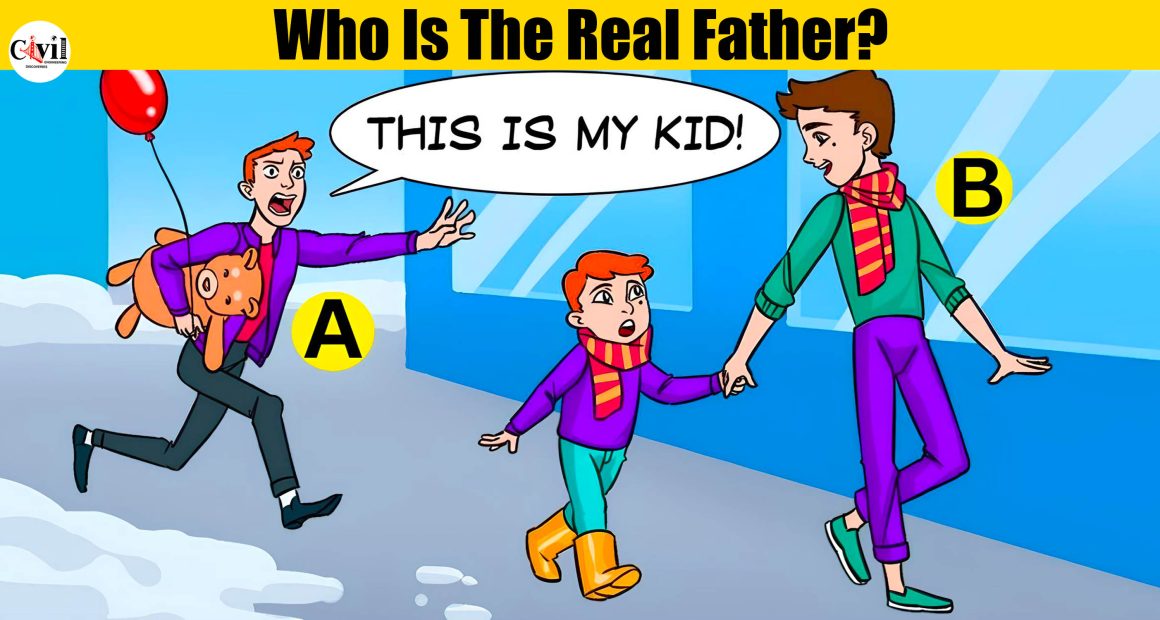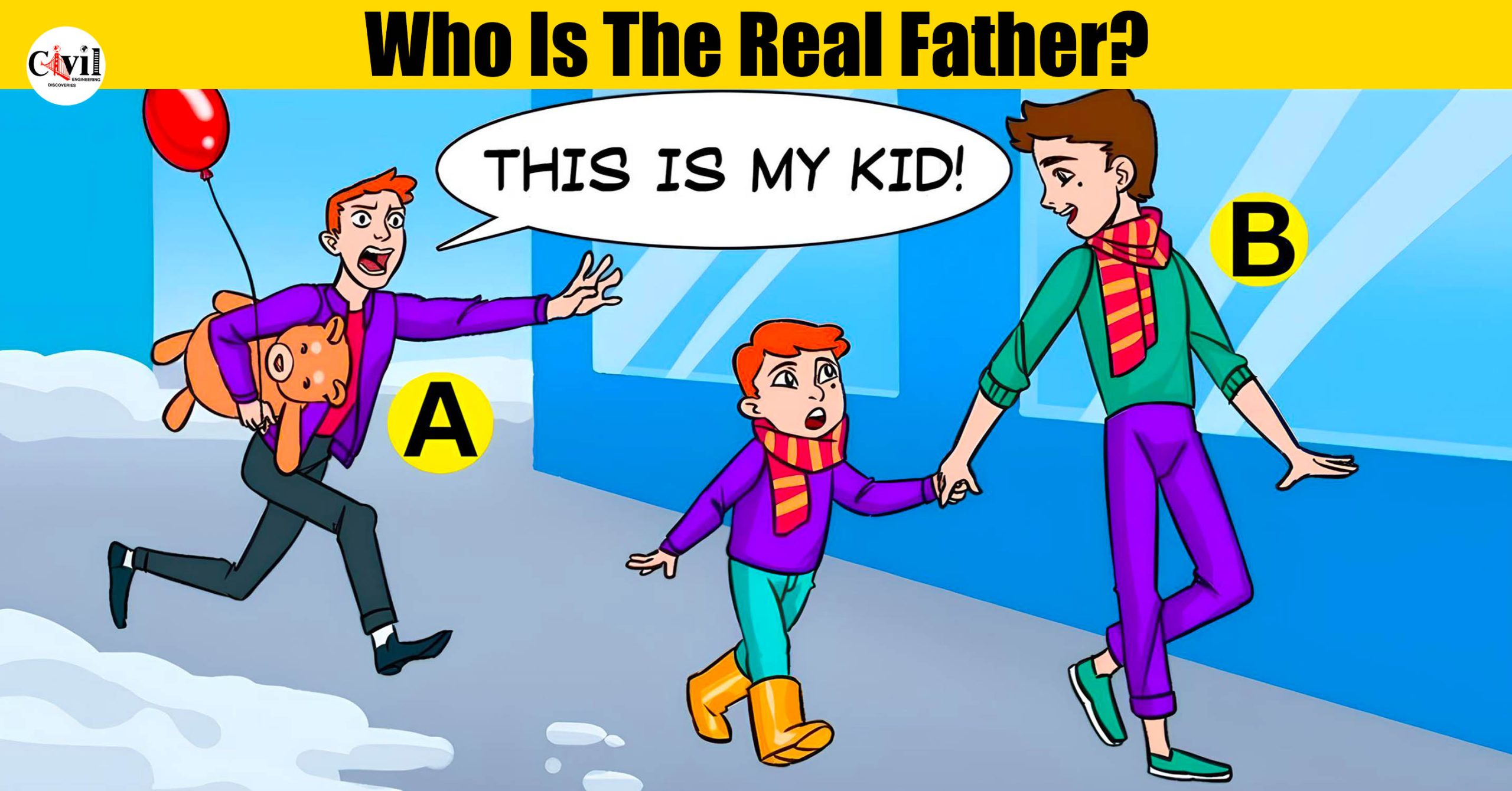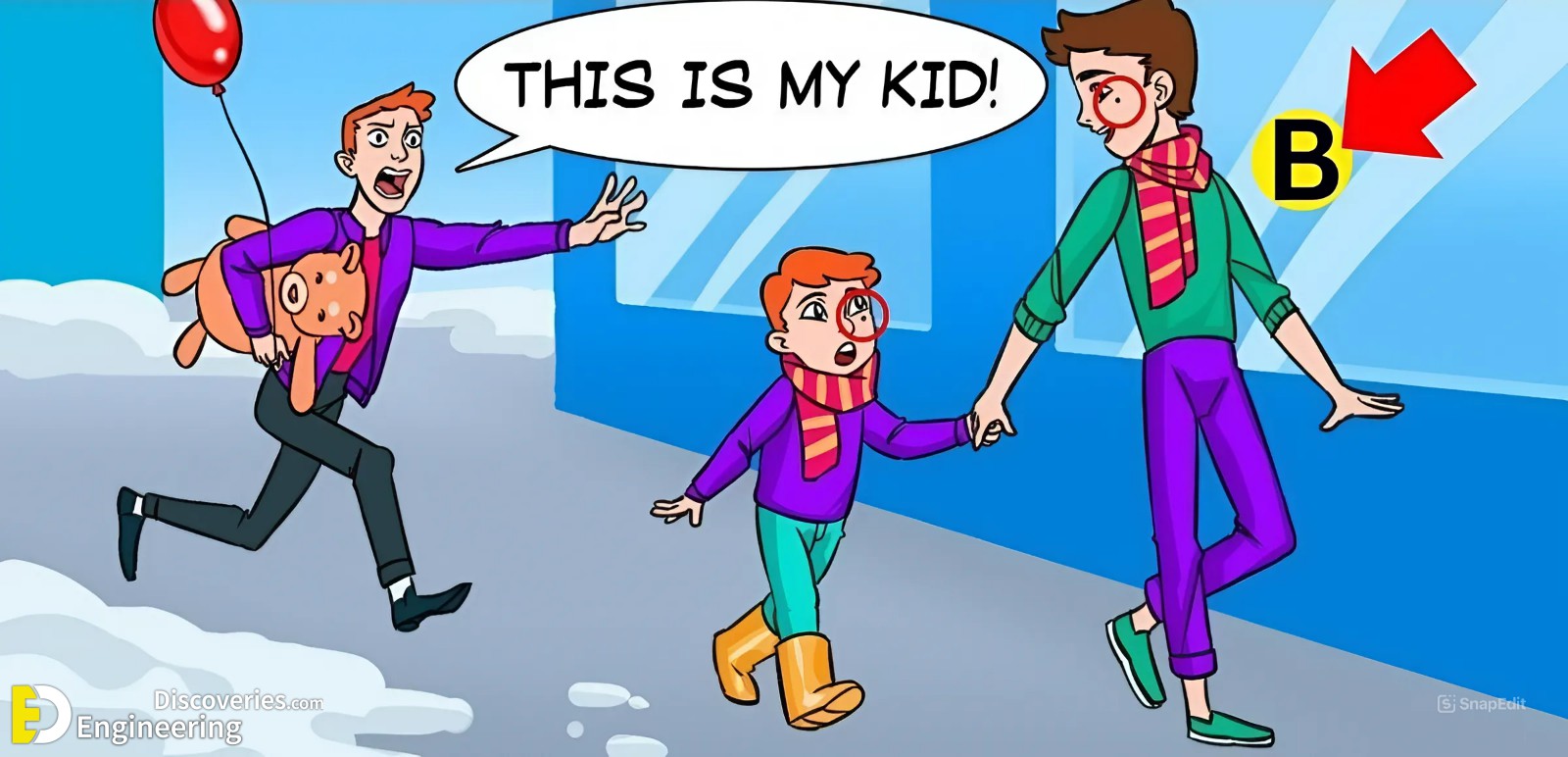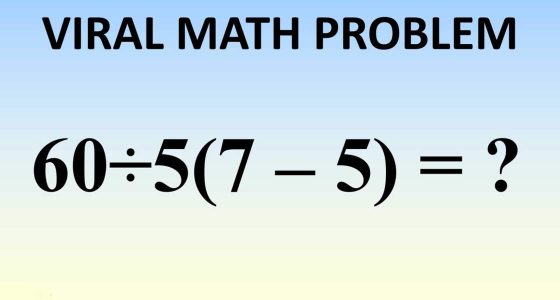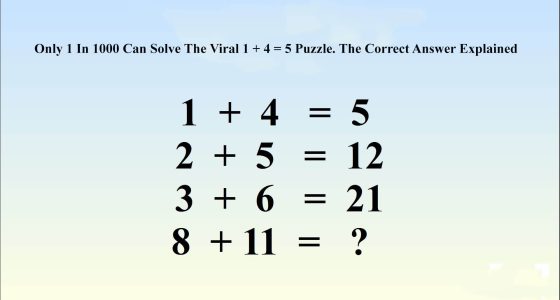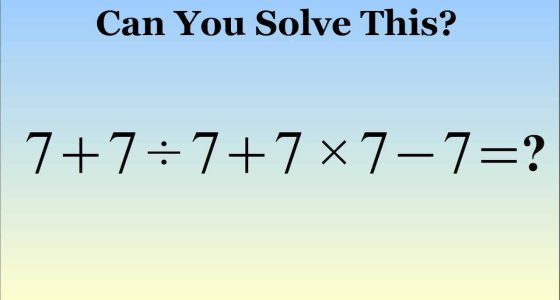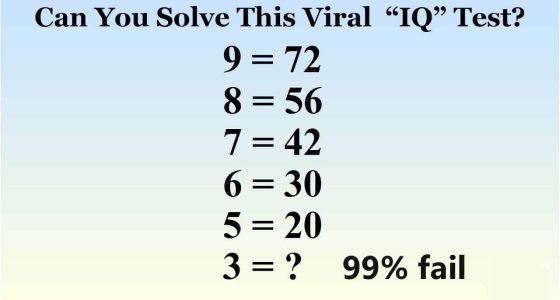Today’s visual riddle is more than just a game. It’s a rapid-fire IQ test designed to challenge your instincts, sharpen your mind, and boost your perception. Picture this: you’re standing on a bustling street. You notice a man walking hand in hand with a child. Suddenly, another man appears, shouting that the child belongs to him.
You have only 5 seconds to figure out who the real father is.
Use Emotional Cues and Body Language
In this mental puzzle, logic alone isn’t enough. You must rely on emotional intelligence and visual cues. Focus on the small details—eye contact, body orientation, comfort levels, and physical resemblance. These subtle signs reveal the truth faster than words ever could.
Man A vs. Man B – Who’s the Father?
Let’s break it down:
Man A is walking calmly, holding the child’s hand.
Man B is approaching from behind, loudly claiming he’s the real father.
At first glance, you might assume the man with the child is the parent. But here’s the twist: appearances can be deceiving.
The Key Detail Most People Miss
Look closely at the child’s face. Notice the mole on the cheek. Now observe Man B—he has the exact same mole in the same spot. This shared physical trait is a strong genetic clue, one often overlooked in rushed judgments.
Despite the noise, the truth lies in the details. Man B is the child’s biological father.
Why This Riddle Sharpens Your Brain
This isn’t just a fun challenge. Visual puzzles like this improve your attention to detail, strengthen cognitive agility, and enhance problem-solving speed. The more you engage with these brain teasers, the better your focus and memory become.
Every time you train your brain with logic puzzles, you build new neural pathways. That leads to sharper thinking in everyday life—whether in decision-making, observation, or analytical reasoning.
Did You Get It Right?
If you spotted the mole and chose Man B—congratulations! You’re among the few with advanced observation skills. If not, don’t worry. Each puzzle is a chance to grow and challenge your brain.
Keep practicing. The more puzzles you solve, the better you get at identifying patterns, reading body language, and trusting your intuition.
